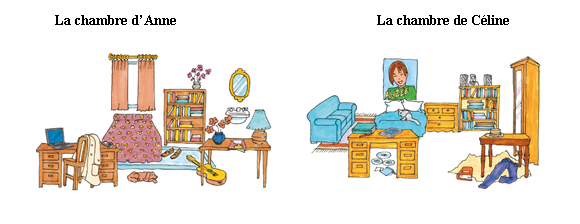Look at the illustrations of Anne and Céline’s bedrooms below. Read the descriptions and indicate whose room is being described: Anne’s (A) or Céline’s (C). If the description could apply to both of their rooms, use (A/C).

J’ai une affiche sur le mur. ___________
Answer: C
You might also like to view...
Choose which strategy below helps support running successful meetings.
(a) Allow the conversation to stray as the group desires. (b) Set an agenda with specific time limits for items of discussion. (c) Don’t waste the group’s time by summarizing minutes from the last meeting. (d) Highlight points of disagreement. (e) Avoid appointing roles; instead, let the roles spontaneously evolve.
In each group, select the sentence that is correctly punctuated
A) The football team must score during the overtime, otherwise the game will end in a tie. B) The football team must score during the overtime, otherwise; the game will end in a tie. C) The football team must score during the overtime; otherwise, the game will end in a tie.
Gabriel: Actividad ________________
What will be an ideal response?
In the last paragraph of this reading, geneticist Robert Plomin is quoted as saying, "The wave of acceptance
of genetic influence on behavior is growing into a tidal wave that threatens to engulf the second message of this research. These same data provide the best available evidence for the importance of environmental influences." Which of the following best restates Plomin's meaning? a. In addition to focusing on the idea that the genes we are born with influence our personalities, psychologists should also keep in mind that our surroundings and experiences can shape our personalities as well. b. The field of genetics is expanding with the same speed and destructive force as a tidal wave on the natural environment. c. The primary message of the nature–nurture debate is that it is pointless to argue about what influences personality development. d. Those who believe that our genes influence our personalities are mistaken; the environment alone is the deciding factor in explaining why we are the way we are.